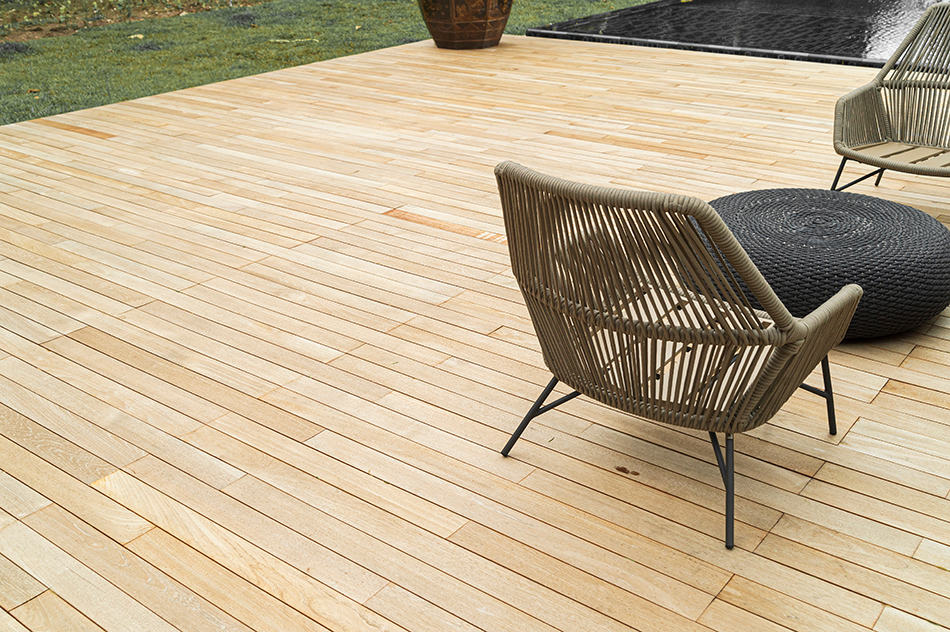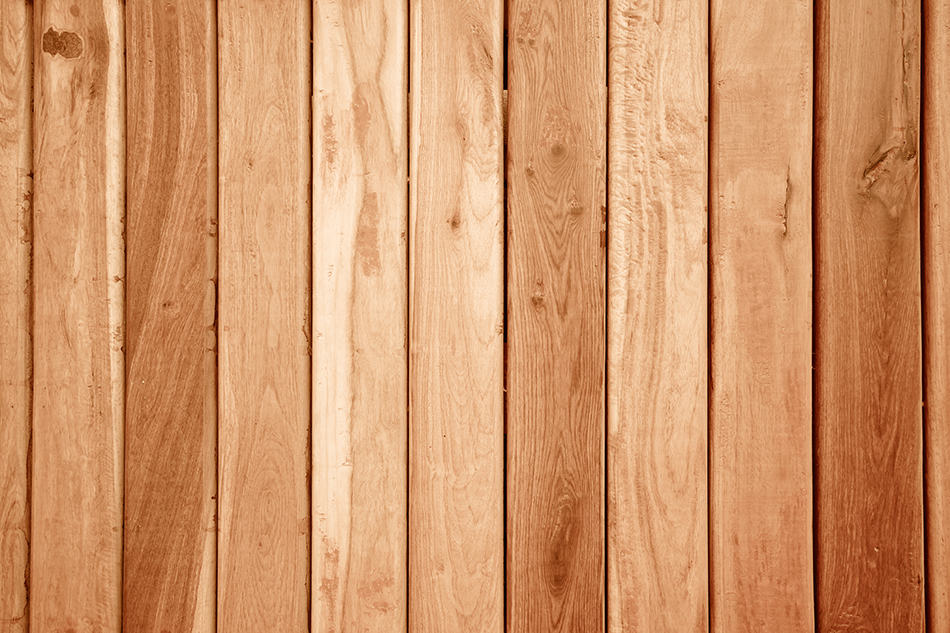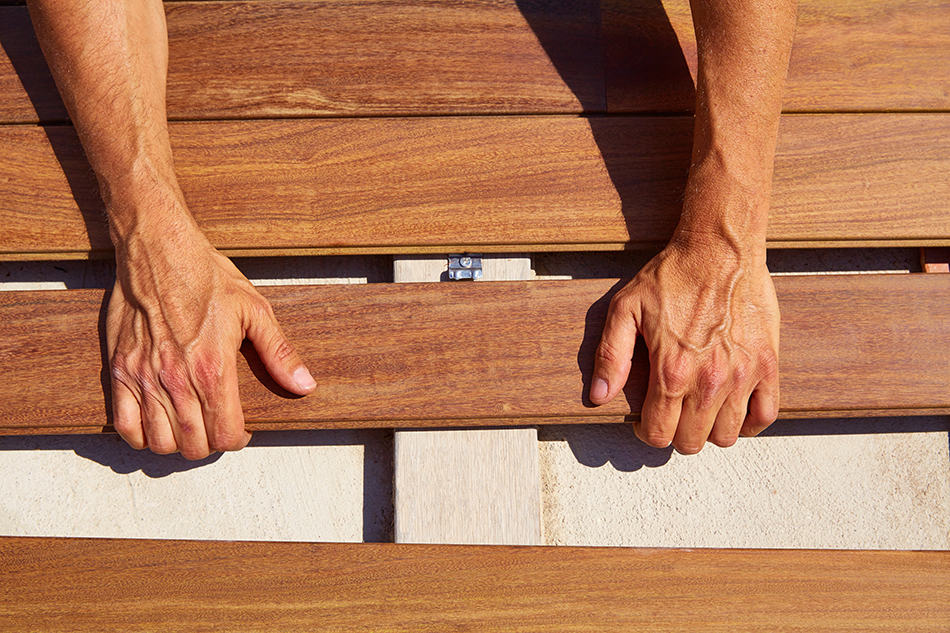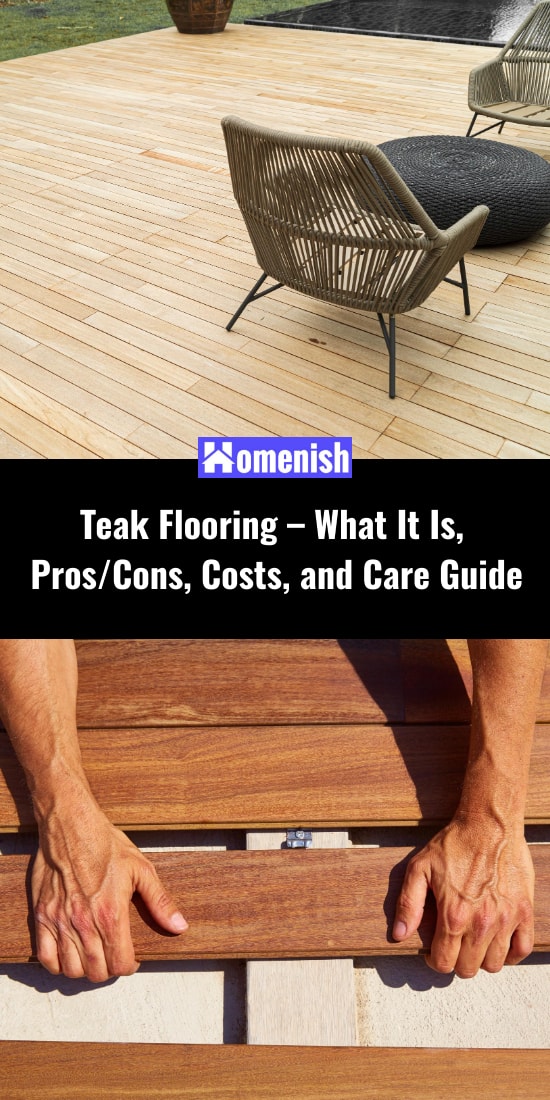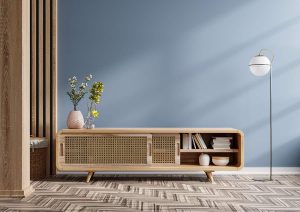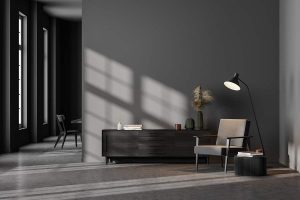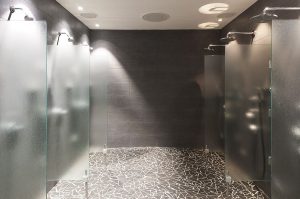Teak Flooring has been favored by lots of homeowners for its rich deep color and high durability, which shows off the house value. However, it comes with a costly price to install. In this article, we’ll learn all about teak flooring – its benefits, disadvantages, installation costs, and how to care for it.
What is Teak Flooring?
Teak is a type of hardwood that is popular for use in flooring. Teak flooring can be made from solid teak, or for a more cost-effective option, it can be made from engineered hardwood with a teak veneer. Teak flooring is typically laid in planks of various sizes.
Teak flooring comes from the deciduous teak tree that is native to the tropical regions of Southeast Asia, notably Bangladesh, Malaysia, Thailand, and Sri Lanka.
The tree has also become naturalized in other areas of the world, including the Caribbean and some African countries. This is a dense tree that makes teak a very solid and sturdy wood, ideal for use in flooring that generally needs to be hard-wearing.
Advantages of Teak Flooring
Resistant to Damage
Teak is a hardwood that is known for being durable. It is able to withstand average levels of foot traffic without sustaining noticeable wear and tear. It is also strong enough to resist damage such as scratches from pet claws, moving furniture around, or dings from dropped items.
Compared to other types of hardwood, teak flooring isn’t the strongest, so if you need a very hard-wearing floor, then teak may not be the best option, but it is certainly able to cope with the average use by most families without sustaining damage or daily wear and tear and should stay looking new for many years to come.
Repels Insects
Teak naturally contains high levels of oil, and these oils act as a repellent to insects. This means if you have suffered from problems such as termites in the past, teak will give you peace of mind that you won’t encounter these issues again. The oils in teak also protect it against fungus, mold, and rot, which can cause expensive and frustrating problems if they do occur.
Resistant to Water
The high level of oils naturally found in teak, along with the natural resins, make it resistant to moisture, even when it hasn’t been sealed. This characteristic of teak is what has made it a popular choice of wood for building boats or for use in exterior projects such as decking, as it is able to repel water better than most types of wood. This makes teak wood a good choice of flooring in a kitchen, where humidity is generally higher, and you are more likely to encounter accidental spills.
Teak flooring can even be used in a bathroom, and any spillages will not cause damage to the floor in the same way that they would with most other types of wood flooring.
Naturally Shiny
The other advantage of teaks naturally oily state is that it gives the flooring a shiny appearance. The floor will maintain a high shine even without using additional oil treatments or sealers, though to keep your teak flooring in the best condition, it should be oiled annually. As well as creating a natural shine, the oils in teak also keep it from drying out, which can cause cracking.
Low Care
Teak flooring requires very little in the way of care and maintenance. Its natural presence of oil means it is fairly self-maintaining, and you can keep it in excellent condition simply by regularly mopping or dusting it. To keep the teak flooring looking new, it is best to oil it annually, but this is a fairly quick and easy process.
Long-Lasting
Teak flooring, whether it is made from solid teak, or engineered hardwood with a teak veneer, is considered to be very long-lasting. It can be sanded every few years to help bring it back to its former glory if it does sustain any damage and represents a good investment.
Despite being an expensive choice, the amount of years you will get out of teak flooring actually makes it more cost-effective than some other types of wood flooring, as it will not need to be replaced for many decades or even centuries.
Classic Look
Teak has a classic look that is associated with luxury and opulence. It has a warm golden brown tone that makes any room look appealing. It suits a wide variety of interiors and can work with any color scheme.
Disadvantages of Teak Flooring
Environmental Impact
If you’re interested in buying teak flooring, then it’s a good idea to do some thorough research on the company you are buying it from because some sources involve themselves in questionable environmental practices.
Teak is a slow-growing tree that typically takes between 80 and 120 years to mature, though, for economic reasons, it is now generally harvested when the tree is between 40 and 60 years old. When harvested at this age, the teak can be softer than the mature wood and may also only be available in shorter lengths.
Due to the fact that teak trees take such a long time to mature, many teak forests were over-harvested and are now considered endangered. It has since become illegal to export many types of teak, and there is only one variety that is still legal; the common teak tree, Tectona grandis.
These trees are cultivated on farms and represent a more sustainable option compared to other teak harvesting methods, but they still represent an ethical issue for many people concerned with sustainability.
The fact that teak can sell for a lot of money makes it a valuable commodity that many people will illegally trade, so when buying teak flooring, you need to ensure that it has come from a trusted source working directly with sustainable teak farms.
Expensive
One of the biggest drawbacks of teak flooring for many people is the cost. It has a high purchase price compared to many other types of wood, and this is a result of the fact that the trees take such a long time to grow. However, if you are looking for longevity, then teak flooring can actually represent a money-saving, as it will last a long time and therefore represents a good investment.
Teak is a sought-after flooring that can also help add value to your home.
Cost of Teak Flooring
Teak flooring has many benefits but these, as you would expect, come at a cost. Teak flooring has a reputation for being a luxury, premium wood, and it is priced accordingly. You can expect to pay somewhere in the region of $10 per square foot of teak flooring, though this can vary enormously depending on the finish you go for and where you source it from.
If you find teak flooring at a price that seems too good to be true, then it probably is, and you should thoroughly investigate the source of the wood to ensure it comes from a reputable teak farm where the trees are grown sustainably and legally.
The high price of teak and the fact that teak trees take such a long time to grow have created an illegal market for teak wood, and supporting this trade would encourage the deforestation of already endangered species of teak.
When buying teak flooring, you’ll be faced with the option of solid teak planks or engineered hardwood with a teak veneer. Solid teak will be significantly more expensive, but this type of teak will last for many decades and will usually not need to be replaced in your lifetime. However, it has a higher price tag.
Some people feel it is worth it because it will last so much longer than engineered hardwood. If you are expecting to want a new floor in ten or twenty years anyway, then engineered hardwood is your best option. This is made from thin planks of wood glued together or other wood derivative products that have been condensed together using adhesive, with a thin layer of teak veneer glued to the top.
This gives you the look of teak and most of the benefits, without the high cost. Engineered hardwood with a teak veneer is more affordable, and it has a life expectancy of at least two decades. It is hard-wearing like solid teak, and if you opt for a thick veneer, it can even be sanded down and refinished.
You can choose different thicknesses of teak veneer, which usually range from between 2mm and 6mm. The thicker your layer of teak veneer, the more you can expect to pay.
Although teak flooring is a premium option, it can be a sound investment compared to other types of wood flooring because it will stand the test of time and not need repairs or replacements for many years to come, therefore saving money in the long run.
Installing Teak Flooring
If you have paid a lot of money for your teak flooring, then you’ll probably want to pay a specialist floor fitter to install the flooring to ensure it is done perfectly. However, if you are handy at home improvements, you may be able to install it yourself.
You can lay teak flooring directly on top of plywood, but it’s a good idea to add a layer of foam over the plywood as this will provide some cushioning and help to prevent squeaky boards. Many types of teak flooring will simply click together with tongue and groove fittings and can then be tightened with a mallet.
Other types of flooring may need nailing down, and this sort is better left to a professional as specialist carpentry tools will be required, and there is a greater margin for error. After installation, you may want to stain or seal your teak or leave it in its natural state.
Caring for Teak Flooring
Teak flooring is easy to care for. On a daily basis, you should sweep the floor with a soft microfiber head to remove dust or use a vacuum. Around once a week, the floor should be mopped. To do this, you can just use water, but to maintain a high shine and ensure ultimate cleanliness, a homemade mixture of water and vinegar is the best option. To do this, mix a quart of warm water with around a quarter cup of white vinegar, and mop it right onto the floor.
At first, the smell of vinegar may be quite overwhelming, but this will completely disappear after the floor has dried. If the scent bothers you, you can add a little lemon juice to the mixture to help disguise the smell. Avoid using commercially bought cleaners as these contain chemicals that can harm your flooring over time.
On an annual basis, you should oil your teak flooring to keep it in optimum condition and ensure it maintains its shine. To do this, first, give the floor a good clean with both a vacuum and mop to ensure there is no trace of dirt on the floor. You can also use a specialist teak floor annual cleaner if you wish.
Once you are happy that the floor is clean, apply the oil and work it into the floor using a hard-bristled brush. Follow the directions on the oil container, and apply as many times as you wish to deepen the color or the shine.
Most oils will generally require that they are left to absorb into the floor for 24 hours before the excess is removed with a soft cloth. You can also have the floor polished every few years if you wish, but this isn’t essential.
If you do not take proper care of your teak floor, you might find that it needs some special attention after a few years. Teak flooring can easily be brought back to its former glory by sanding it and then oiling it.
You should hire a contractor to do this for you, or rent a specialist floor sander. Attempting to sand the floor by hand will not get you good results and can just cause unnecessary damage. If you have moved into a property where the teak flooring is in bad condition, you can also follow this advice to sand the floor to bring it back to a good condition.
